Transforming aerospace design: Optimizing airplane seat brackets
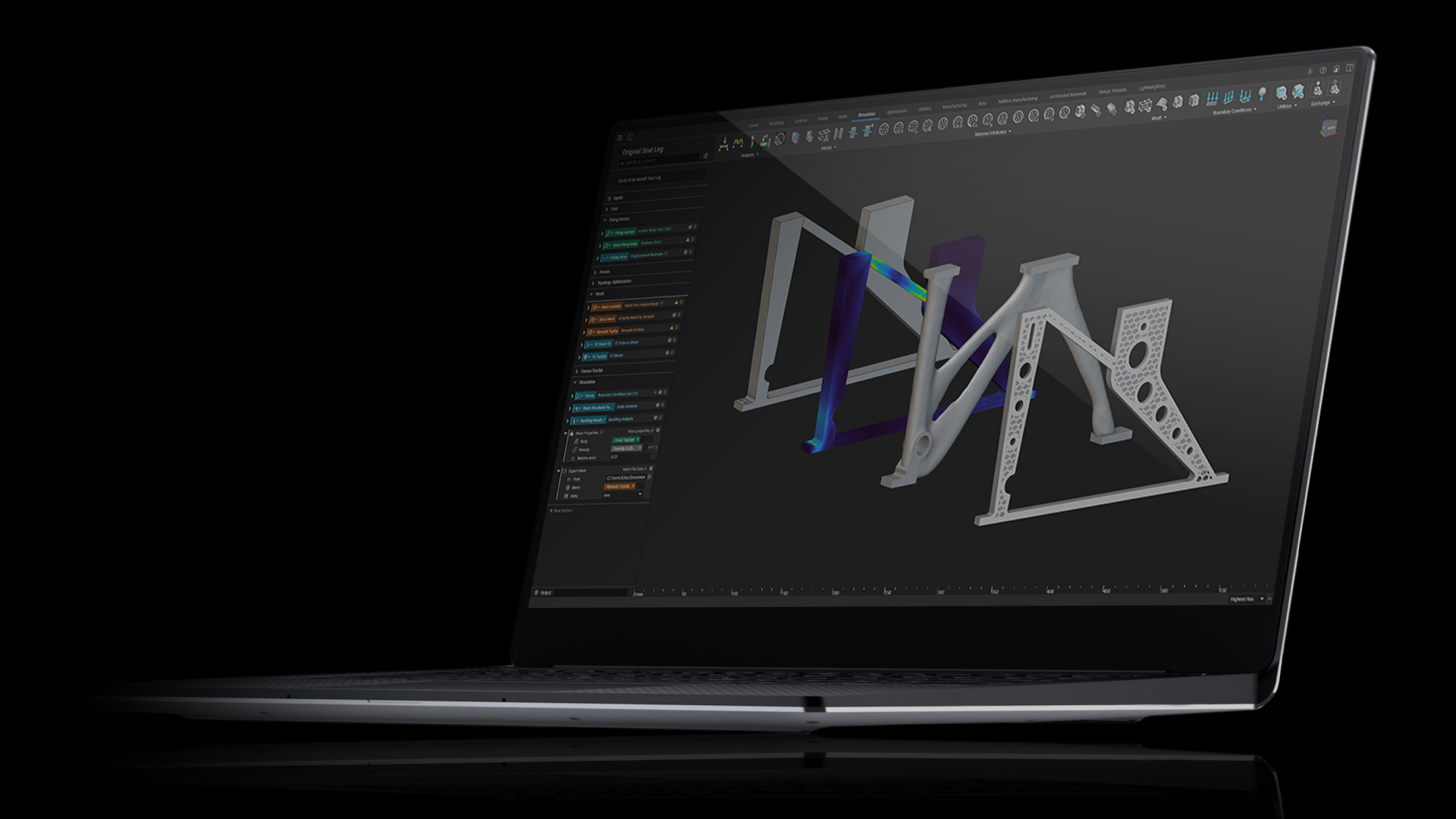
Written by nTop
Published on September 15, 2023
Discover how engineer Elisa Jara, armed with skills from the 3D Printing Bootcamp and nTop's design software capabilities, was able to optimize airplane seat brackets using simulation data and generate real-world results.
Applications
Key Software Capabilities
- Design automation
- Lattice structures
- Topology optimization
The convergence of cutting-edge technology and innovative design strategies has paved the way for significant changes in various industries, including aerospace. In this article, we delve into a project from The 3D Printing Bootcamp, a hub of industrial 3D printing training. Elisa Jara, an Application Technology Specialist at BASF Forward AM and 3D Printing Bootcamp student, designed a lighter airplane seat bracket using nTop's design software functionalities. She focused her work on the speed of iteration and optimization based on simulation data. This undertaking extended to a comprehensive assessment of manufacturing costs and material expenses, ultimately leading to the development of an optimal design solution for airplane seat brackets.
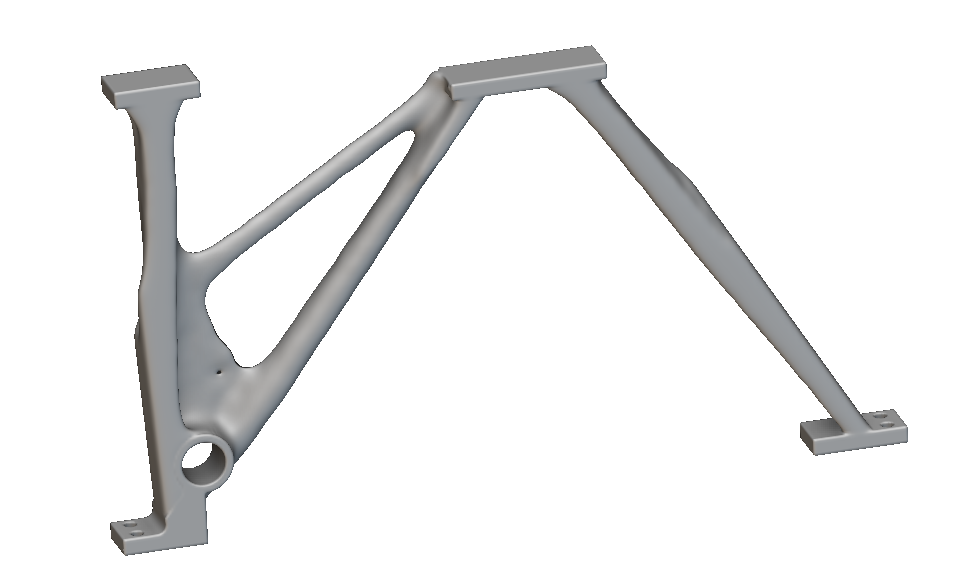
An airplane seat bracket design, optimized with nTop
If you're interested in learning more, check out our recorded webinar for an even deeper dive into Elisa's work
Why airplane seat brackets?
Airplane seat brackets emerged as a prime candidate for optimization due to their intricate design, functional significance, and the potential for substantial weight reduction. Notably, there are a significant number of these brackets throughout an airplane, emphasizing the potential for ample weight reduction due to their sheer quantity. By leveraging the power of AM and advanced design techniques, these brackets could be reimagined in ways previously unmakeable with traditional manufacturing methods.
Creating the component
Elisa took several steps during the design process—let's explore some of the key phases of her project:
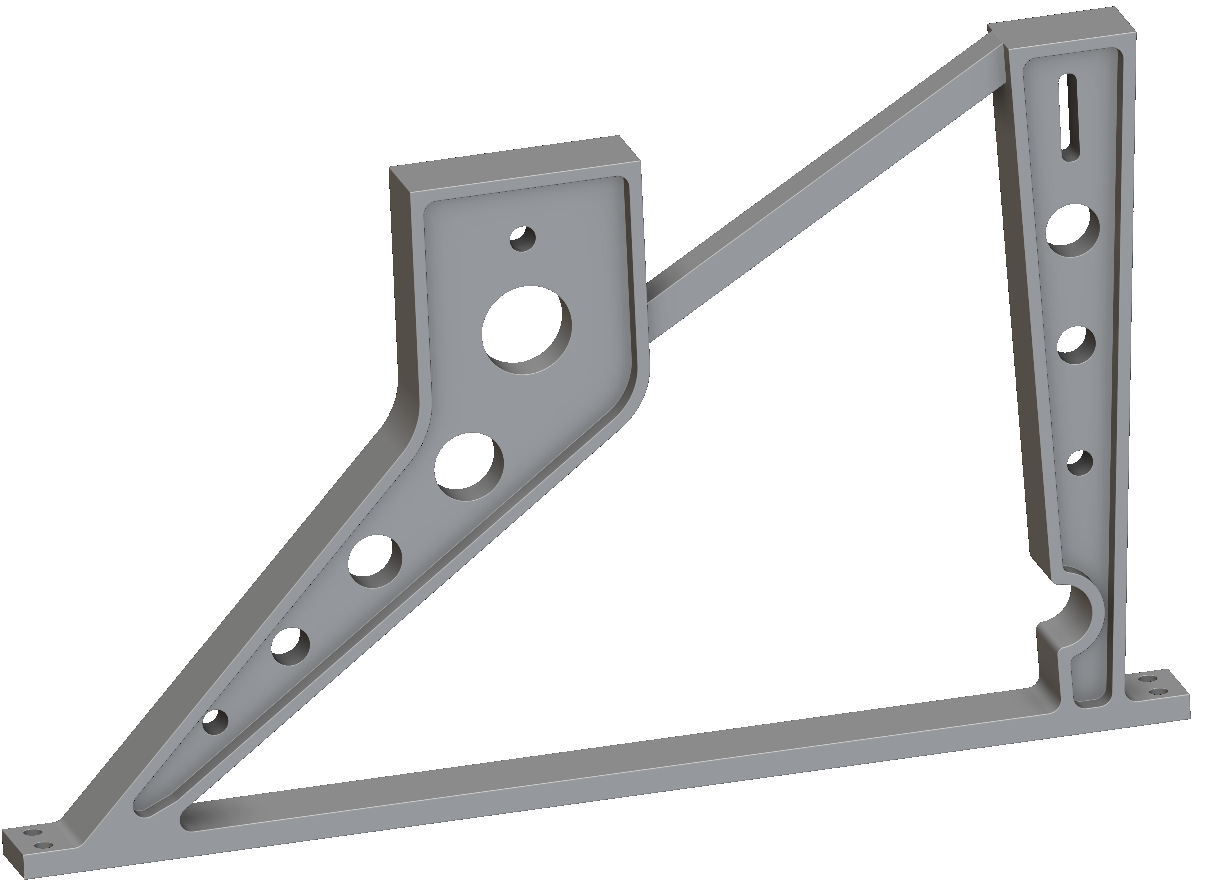
The seat bracket before Elisa optimized the design with nTop
Design and model creation: The project began with Elisa designing a detailed model of the original aircraft seat leg. This step was imperative as it laid the foundation for subsequent simulations and analyses.
Simulation: Elisa then simulated the performance of the bracket, assessing critical parameters such as weight, safety factor, stress, and displacement. Putting this data back into nTop, Elisa was able to test different simulations that were pivotal in evaluating the performance of various designs and materials.
Mechanical behavior analysis: A core aspect of the project was the rigorous analysis of the software simulations. Elisa discovered that the safety factor of the original bracket could be reduced and still support a safe amount of weight. Her testing ensured that the redesigned brackets maintained the mechanical properties, ensuring passenger safety remained paramount.
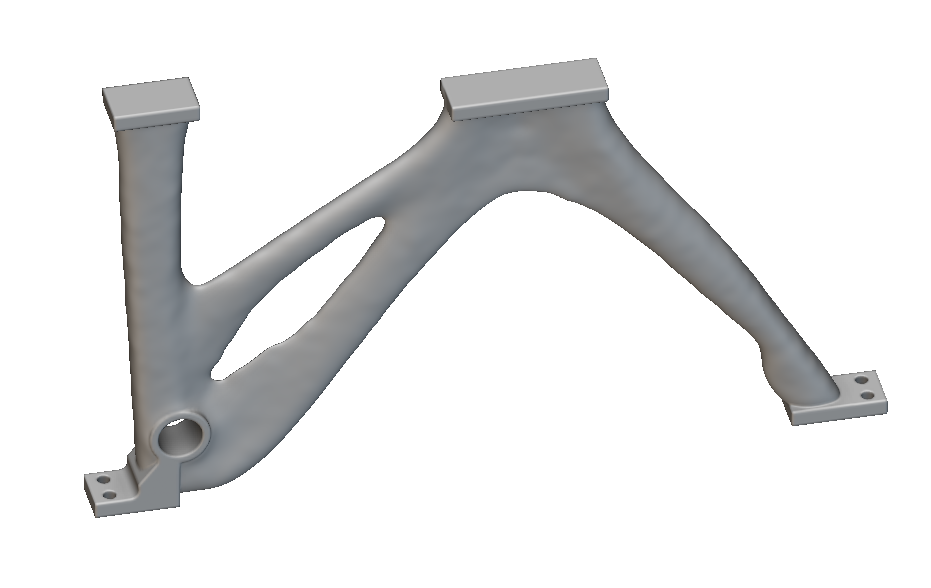
One of the design iterations Elisa created with nTop
Exploration of different designs: Elisa then explored various design possibilities to see which would work best. With the power of nTop's design software, she could rapidly iterate through designs with little interruption to her workflow. This iteration involved not only varying lattice structures and experimenting with different materials but also delving into complex combinations of design elements that would have been exceptionally challenging — or even impossible — to achieve using traditional CAD tools alone.
The outcome and nTop’s role
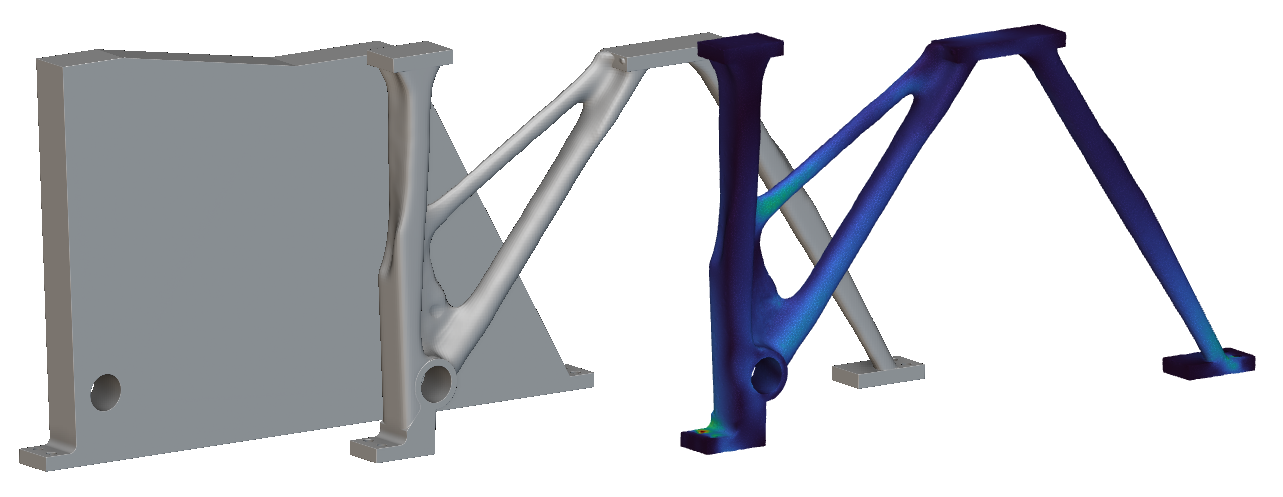
nTop made the process of optimizing the seat bracket easier and faster
Elisa's project yielded four distinct solutions that achieved a substantial reduction in component weight while maintaining safety factors. These lighter designs, made possible by nTop, hold the potential to optimize manufacturing, reduce costs, and also to lessen the environmental impact associated with manufacturing and operating aircraft.
At the core of Elisa's project lies the role played by nTop's design software. It allowed Elisa to realize her vision and test lighter designs, seamlessly facilitating simulations of different design scenarios and integrating different techniques, such as topology optimization. nTop's capacity to accelerate the design process and empower iterative approaches was the key to unlocking the full potential of Elisa's ideas.
The 3D Printing Bootcamp: Shaping the future of industrial design
Committed to providing participants with an immersive learning experience, the 3D Printing Bootcamp equips engineers and designers with the skills and expertise needed to navigate the complex landscape of modern manufacturing.
The Bootcamp unfolds over an intensive 110-hour program. During this time, participants acquire the skills to think beyond the confines of traditional design paradigms. They learn how to collaborate with AI-driven systems to co-create designs, craft lattice patterns that reduce material consumption while maintaining structural integrity, and delve into the nuances of topology optimization, learning how to refine and optimize complex structures.
The next edition of The 3D Printing Bootcamp begins in December of 2023. It covers topology optimization, lattice structures, and generative design. You can get more information and register on their website.
Curious to learn more about the details of Elisa's project and how she used nTop to meet her objectives? Watch the webinar recording for the full story.

nTop
nTop (formerly nTopology) was founded in 2015 with the belief that engineers’ ability to innovate shouldn’t be limited by their design software. Built on proprietary technologies that upend the constraints of traditional CAD software while integrating seamlessly into existing processes, nTop allows designers in every industry to create complex geometries, optimize instantaneously, and automate workflows to develop breakthrough parts and systems in record time.




